Malbork Castle in Poland: Ultimate Guide
Malbork is much more than just a monumental Teutonic castle listed as a UNESCO World Heritage Site. It is a city where history intertwines with modernity, and behind its brick walls lie places full of life, interesting stories and extraordinary views. Stroll through the narrow streets, admire the panorama from the water tower, sail down the Nogat River and discover the secrets of the old fortifications. Malbork is waiting for you to discover its less obvious side and experience something more than just a classic Malbork Castle tour. Get ready for a journey full of surprises – this is truly a city to explore!
A Monumental beginning: Enter Malbork through i'ts castle complex
Before we set off to explore Malbork’s lesser-known corners, it's only fair to start with the city’s most iconic symbol – the mighty castle and castle museum that has shaped its identity for centuries.
Malbork Castle museum – a medieval gem and witness to European history
Indeed, Malbork Castle in Poland is the city's most iconic landmark—you’ll find it featured on nearly every postcard and magnet. Built entirely of brick by the Teutonic Order in 1274, it stands as the brick largest castle in the world and a stunning example of Gothic defensive architecture. Located in the Pomeranian Province, about 60 km south-east of Gdańsk, the castle majestically overlooks the picturesque banks of the Nogat River. Often topping the list of must-see castles in Poland, Malbork Castle is a true historical gem and a testament to medieval craftsmanship on a grand scale.
Surrounded by massive earthen ramparts, moats, and expansive green areas—once designed for defence and now forming a scenic landscape—the castle complex was not only a military fortress but also a centre of administrative, economic, and religious power. After the decline of the Teutonic Order, the castle became the royal residence of Polish kings and later suffered neglect during the partitions and wars. Following heavy damage during the Second World War, it was meticulously reconstructed in the post-war years and today houses the Castle Museum (Muzeum Zamkowe w Malborku), established in 1961. The museum plays a crucial role in preserving and showcasing the cultural heritage of the region.
The Teutonic Order was ahead of its time: Malbork – a medieval masterpiece of engineering and logistics
What makes Malbork Castle particularly fascinating is its use of remarkably advanced and intelligent solutions for the time. The Teutonic Knights implemented an early form of centralized heating using ceramic hypocaust systems, as well as sophisticated water management strategies involving wells, cisterns, and drainage systems. The spatial organization of the castle also reflects strategic thinking, with clear divisions between the High, Middle, and Lower Castles allowing for efficient control, defence, and functionality. Such innovations underscore not only the architectural genius of its builders but also their deep understanding of logistics, defence, and comfort—centuries ahead of their time.
An interesting fact about monastic life
When visiting the castle, it is worth paying attention to one of the intriguing details concerning the life of the Teutonic Knights. Although they were rather short in stature — as can be seen from the small beds in the dormitories — the way they slept is even more interesting. The Teutonic Knights believed that lying down completely to sleep could bring death because death ‘takes those who lie down’. Therefore, they slept in a semi-sitting position. This unusual ritual shows how strong their beliefs were and how closely their daily life was connected with spirituality and monastic rules.
The three faces of the stronghold – Visiting the High Castle, the Middle Castle and the Grand Masters' Palace
Malbork Castle in Poland is a sprawling complex that offers a rich tapestry of history, architecture, and culture. A typical visit requires a minimum of 3-4 hours to fully appreciate the grandeur of this medieval fortress. The castle is divided into three main sections: the High Castle, the Middle Castle, and the Grand Masters’ Palace, each with its own unique features and historical significance, making it feel like you are experiencing half of a grand historical narrative.
Visitors can follow the Historical Route, the most popular guided path, which leads through key areas of the fortress. It offers insight into the daily life of the Teutonic Knights, Gothic architecture, and medieval innovations, making the experience both educational and immersive.
The High Castle complex
The High Castle, the oldest part of the Malbork Castle in Poland complex, began construction around 1276 and features a distinctive quadrilateral layout characteristic of a fully developed Teutonic stronghold. This area includes the conventual chapel and the Great Refectory, which served as a dining hall for the Teutonic Knights. The Great Refectory is particularly notable for its impressive vaulted ceiling and grand fireplace, making it a central gathering place for feasts and celebrations.
Exploring the High Castle offers visitors a chance to step back in time and experience the architectural brilliance and historical significance of this medieval fortress. The intricate design and preservation of this area provide a fascinating insight into the daily lives and grand ceremonies of the Teutonic Knights.
The middle Malbork Castle in Poland
The Middle Castle serves as a critical area of Malbork Castle, showcasing the transition in architectural styles and the evolution of the Teutonic Knights’ presence. This section is known for its impressive brickwork, historical artifacts, and areas dedicated to the daily life of its inhabitants. One of the highlights of the Middle Castle is the Gothic Café, where visitors can enjoy refreshments while soaking in the historical ambiance.
The Middle Castle provides a fascinating glimpse into the blend of functionality and grandeur that characterized the Teutonic Knights’ approach to architecture. Its well-preserved structures and artifacts offer a vivid portrayal of medieval life within the entire castle walls.
The grand masters' palace
The Grand Masters’ Palace stands as a testament to the opulence and architectural prowess of the Teutonic Order. Renowned for its majestic interiors, the palace includes intricately designed spaces that reflect the lavish lifestyle of its historical occupants. Notably, the kitchen boasts a striking 6m-wide fireplace, while the Great Refectory, the largest chamber in the castle at 450 square meters, showcases the grandeur of medieval feasts.
Visitors to the Grand Masters’ Palace arrive transported to an era of grandeur and sophistication, where the architectural details and opulent interiors provide a captivating glimpse into the lives of the Teutonic Order’s elite.
Outer bailey
At the end of April 2024, two carefully restored buildings from the former economic castle complex—some parts dating back to medieval times—were opened for use. Inside, you’ll now find modern spaces housing the Science Library, conservation workshops, a digitisation studio, the Centre for Teutonic Heritage Research, and archives.
The Castle Museum in Malbork will now be able to continue its construction and conservation work in the outer bailey, thanks to funding awarded by the Ministry of Culture and National Heritage in the second round of the FEnIKS programme.
The Teutonic Castle in Malbork – find out how much you will pay for a tour
A ticket to Malbork Castle is quite expensive, so it's worth making the most of it. You can spend the whole day exploring and relaxing in the castle grounds — until closing time, which is 8 p.m. during summer. In 2025, the price of a regular Malbork castle tickets was 80 PLN, and a reduced ticket was 60 PLN per person. On the Castle Museum website, you will always find up-to-date information on ticket prices, available discounts (including for families and holders of the Large Family Card) and available Malbork castle tour routes.
In Malbork, you can choose from:
Historical Route (duration approx. 3 hours)
A tour of the entire castle. This route partly covers the Castle Grounds Route. This classic route comes with an audio guide. It is also available as a family route with interactive elements.
Castle Grounds Route (duration approx. 1,5 hours)
The tour includes the following: part of the Outer Bailey, the gate passages, the courtyards of the Middle and High Castles, the Chapel of St Anne, the terraces and the Great Masters' Garden, the moat and the Zwinger. Please note that the tour does not include visits to chambers and exhibitions.
Castle Monastery Route
The route is currently unavailable due to conservation work being carried out.
Night Malbork Castle tour (duration approx. 1,5 hours)
The route takes you through the castle's grounds, courtyards, terraces and cloisters, as well as selected interior areas.
However, it is worth remembering that Malbork castle tickets prices may vary depending on the season, type of route, special events and current promotions. During summer, i.e. the high season, increased tourist traffic may affect the availability of dates and prices, so it is always a good idea to check the current price list in advance to avoid unpleasant surprises.
You can check the current price list here -> https://zamek.malbork.pl/en/home/visit/tickets/
Monday is a day of free admission to the Castle Museum in Malbork. On this day, only the Castle Route – Grounds is available. Free tickets must be collected in person at the museum Malbork castle tickets office – tickets are only available in person.
What is the best way to get to Malbork? - We have a tip for you!
The city, located on the picturesque Nogat River, is extremely fortunate – it lies at the junction of three Pomeranian regions: Żuławy, Powiśle and Kociewie, which stretches across the Vistula River. This is why Malbork is often called the gateway to the north – and for good reason.
But if you want complete freedom to explore, a car is the best option.
Enjoy the freedom and flexibility of a short term car rental. Kaizen Rent offers fast and hassle-free car rental in Gdańsk, car rental at Gdańsk airport, as well as in Bydgoszcz, Warsaw and even Katowice – just click on the connection search engine and plan your trip.
From Gdańsk, you can easily reach the historic Malbork Castle in just 52 minutes (62.2 km) via S7 and DK55, making it a perfect destination for a day trip.
Thanks to Kaizen Rent and over 30 branch locations, including airport locations, we're close to your starting point. Your travel plans will remain flexible and stress-free—perfect for a day trip to Malbork or a longer adventure in Poland.
You have three options:
-
Online – Book a car at any time on the website: www.kaizenrent.pl/en
-
By phone – Call the 24/7 hotline: +48 76 727 99 99
-
In person – Visit a Kaizen Rent branch or airport location
Malbork Castle is just the beginning – with car rental you can discover the whole of Pomerania on your own terms. You can make a reservation at any time and, of course, it will be free of charge.
Malbork is not just about the castle – check out what else is worth seeing
If you have already visited Malbork Castle and were completely enchanted by it, be sure to take the opportunity to explore the town itself. Malbork is a place where the Teutonic Knights and Polish queens once walked.
Here are some attractions in Malbork worth seeing beyond the castle:
1. Marian Knight figurines (Rycerz Marianek)
Rycerz Marianek is the official mascot of Malbork, a friendly knight in medieval armour. The first bronze figurines appeared in 2020 and can now be found in various spots around town, such as:
-
The train station – Marianek climbing a lamp post, greeting arriving visitors.
-
Bulwar nad Nogatem – a figurine holding a compass, symbolizing the town’s tourist spirit.
-
Castle Museum ticket offices – inviting visitors to explore the museums.
-
Skwer Miast Partnerskich – Marianek with a compass, representing international cooperation.
Some of the figurines feature QR codes as part of a city game, offering fun facts and challenges.
2. Malborskie monety (Malbork coins)
Malbork honours its rich minting history through aluminium coins placed around the town. Starting in the 15th century, the Malbork mint produced coins for the Teutonic Order, Poland, and Lithuania. Today, five such coins can be seen mounted on stones or embedded in sidewalks at Plac Kazimierza Jagiellończyka, reminding visitors of this fascinating past.
3. Bulwary nad Nogatem (River Nogat Boulevards)
Since the summer of 2022, Malbork has boasted new boulevards stretching from the castle to the city beach. It is the perfect place for a walk, a bike ride or relaxing on a bench. Residents and tourists alike enjoy this space – children play in the nearby North Park, and in the evening, the boulevards are lit up by lanterns, creating a magical atmosphere. Photographers gather on the other side of the Nogat River to capture the illuminated castle in the best possible shot.
4. Cruises on the Nogat River
From May 2022, you can also take a short cruise on the Malbork and Żuławy boats, which take tourists on a trip with views of the castle, the Latin School, St. John's Church and the Town Hall. This is a great opportunity to see Malbork from a different perspective.
-
Ticket prices: standard – 30 PLN,
-
reduced – 25 PLN.
We recommend it! The cruise is a peaceful, pleasant attraction that perfectly complements a tour of the city.
5. Szkoła Łacińska and Planetarium Malbork
The Latin School in Malbork, restored and modernised, combines historical architecture with cutting-edge educational technologies. The planetarium offers 3D astronomy shows and science workshops for children, young people, and adults. The venue also features the Discovery, Imagination and Activity Zone (SOWA), developed in collaboration with the Copernicus Science Centre.
6. Ratusz Staromiejski (Old Town Hall)
The Old Town Hall in Malbork is a Gothic building from the 14th century and one of the few structures that survived the Second World War. Featuring characteristic arcades and a historic turret, it now serves as the Municipal Cultural Centre, hosting events and artistic activities.
7. Brama Mariacka (St. Mary’s Gate)
St. Mary’s Gateis one of the few surviving medieval city gates in Malbork, serving as a remnant of the town’s former defensive walls. Built in the Gothic style, it exemplifies military architecture from the Teutonic period, with its pointed arches, brick construction, and defensive features such as machicolations. Today, it stands as a historical landmark, linking the old town with the legacy of Malbork’s fortified past.
8. Kościół pw. św. Jana Chrzciciela (Church of St. John the Baptist)
The Church of St. John the Baptist is a striking 14th-century Gothic church and one of Malbork’s most important religious landmarks. It features a tall brick façade, pointed arch windows, and a richly decorated interior, including a historic altar and preserved medieval vaults. Despite damage during World War II, the church has been carefully restored and remains an active place of worship and cultural heritage.
9. Zewnętrzne Muzeum Fortyfikacji (Open-Air Fortification Museum)
The site features preserved sections of Malbork’s medieval defensive walls, offering visitors a glimpse into the town’s strategic military past. Visitors can explore the remains of the bastions, gates and walls that once protected the city during the Teutonic era. The site has educational displays and walking paths, making it an essential stop for anyone interested in medieval fortifications and urban defence systems.
10. The non-existent Old Town – a reminder of the heart of Malbork
Although today's centre of Malbork consists mainly of post-war blocks of flats, before 1945 there was a bustling old town with beautiful tenement houses and arcades. Destroyed during World War II and demolished after its end, today it survives only in archival photographs and in three surviving buildings: St. John's Church, the Old Town Hall and St. Mary's Tower. It is a moving testimony to history and transience – it is worth stopping here for a moment of reflection.
Three castles – ‘Ticket for 3 castles’ and an idea for your entire holiday
We have something perfect for every history lover and... bargain hunter! Take advantage of the ‘Ticket for 3 Castles’ promotion, which allows you to visit the castles in Malbork, Sztum and Kwidzyn – all belonging to the Castle Museum in Malbork – for the price of one, cheaper ticket.
The ticket costs 113 PLN (standard) or 83 PLN (reduced) and is valid for 14 days from the date of first admission. During this time, you can see:
-
Malbork Castle with a guide or audio guide (Historical Route),
-
Sztum Castle with an audio guide,
-
Kwidzyn Castle with an audio guide.
This is a great opportunity to combine sightseeing with discovering the other castle in the Żuławy and Powiecie region.
Three castles - Malbork, Sztum and Kwidzyn
Malbork without stress – where is the best place to park?
Parking fees for motor vehicles in the Paid Parking Zone are charged from Monday to Friday between 8:00 a.m. and 5:00 p.m.
Parking fees in the Paid Parking Zone:
-
up to half an hour: 1 PLN,
-
up to one hour: 2 PLN,
-
for each subsequent hour or part thereof: 2 PLN
-
Free parking on Sundays and public holidays. And during the week before 8:00 a.m. and after 5:00 p.m.
Car parks covered by the zone from 1 July 2022: Old Town, Kopernika Street, Kościuszki Street, Narutowicza Square, Piłsudskiego Street, Poczty Gdańskiej Street, Warecka Street, Słowiański Square, Konopnickiej Street, Mickiewicza Street, Solskiego Street, 17-go Marca Street, Zapolskiej Street, Żelazna Street, Dworcowa Street and others.
Parking outside the zone:
-
Wałowa Street and Główna Street (Kałdowo): paid 24/7, first hour 10 PLN, each subsequent hour + 10 PLN, daily ticket 40 PLN, no ticket = 190 PLN
-
Toruńska Street (Municipal Stadium, Dinopark): free of charge.
-
Private car park on Sierakowskich Street: 40 PLN for the first 3 hours, each subsequent hour started 15 PLN
Summary
Malbork Castle is more than just a historical monument; it is a living testament to the grandeur and influence of the Teutonic Order. From its origins in the 13th century to its recognition as a UNESCO World Heritage Site, the castle offers a wealth of history, architectural brilliance, and cultural significance. Whether you're exploring the High Castle, Middle Castle, or the Grand Masters’ Palace, each part of the castle complex provides a unique glimpse into the past, making it one of the most impressive monuments in Poland.
Planning your visit to Malbork Castle involves more than just choosing a day—it’s about creating a full experience. Many travellers combine their visit with a broader itinerary that includes the Baltic Sea Poland coast or the nearby Tri-City area. If you're looking for ideas on what to do in Gdańsk, a day trip to Malbork is a must. During summer in Poland, this region comes alive with cultural events, scenic boat trips on the Nogat River, and relaxing walks along the castle grounds route.
To enhance your visit, consider using an audio guide, taking a boat tour around the castle, or enjoying local cuisine at the on-site restaurant. Convenient car rentals through a reliable rental company like Kaizen Rent make travel easy, especially for those arriving at the train station or Gdańsk airport. As you walk through the halls and courtyards of this magnificent fortress, you’ll be transported back in time, making your trip to Malbork Castle a truly unforgettable adventure.
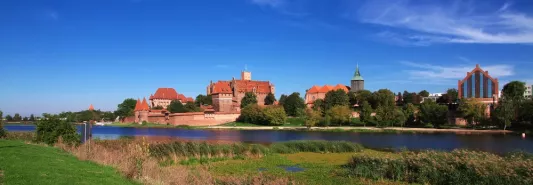
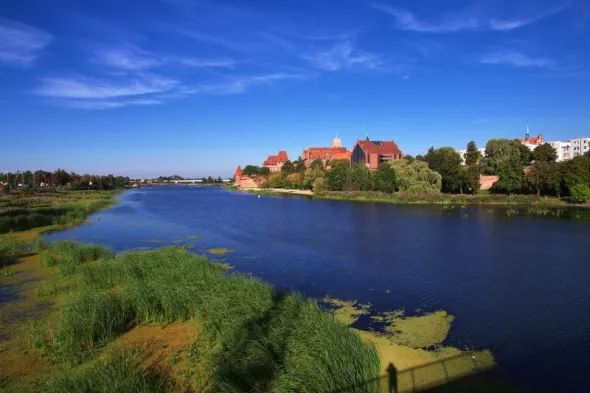
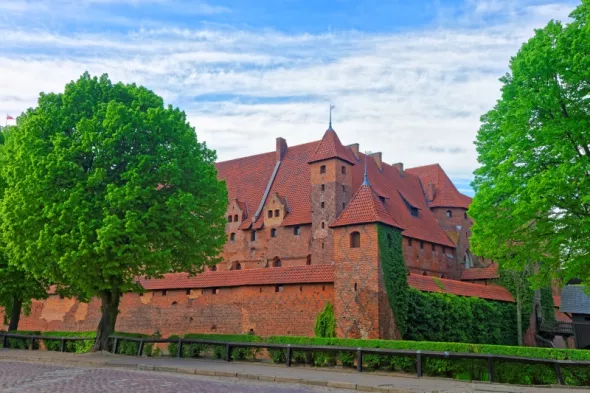

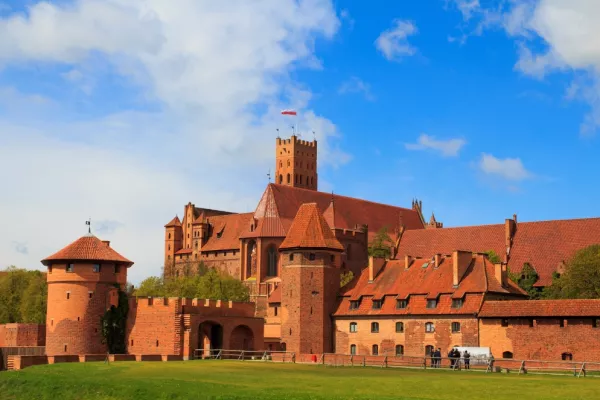
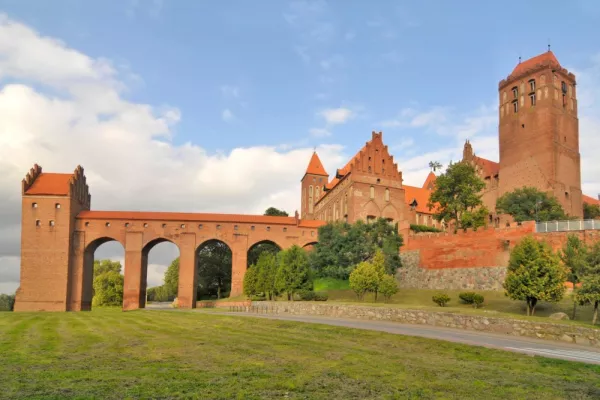
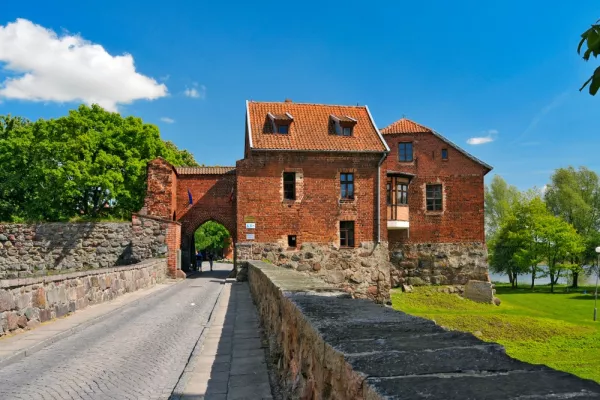


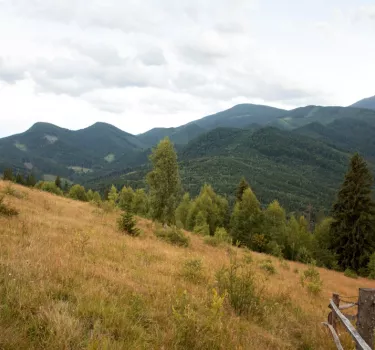
Comments (0) Show comments